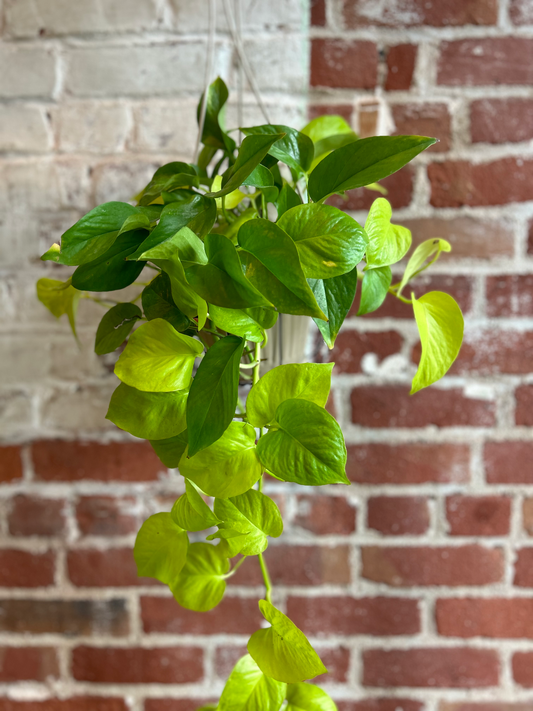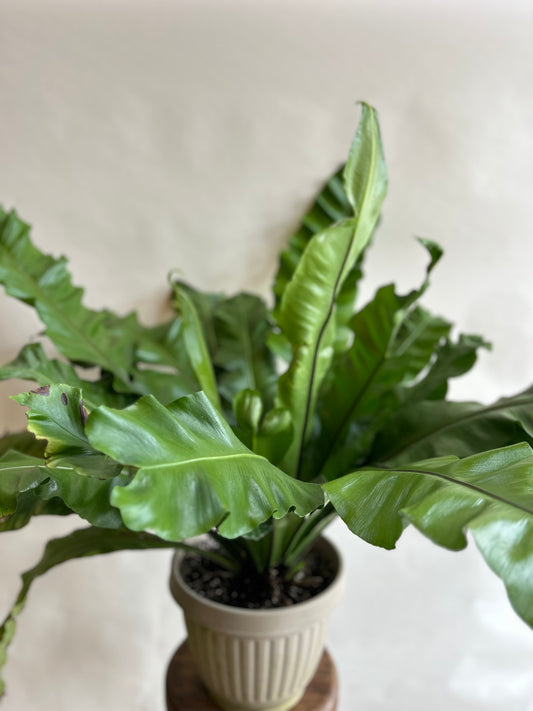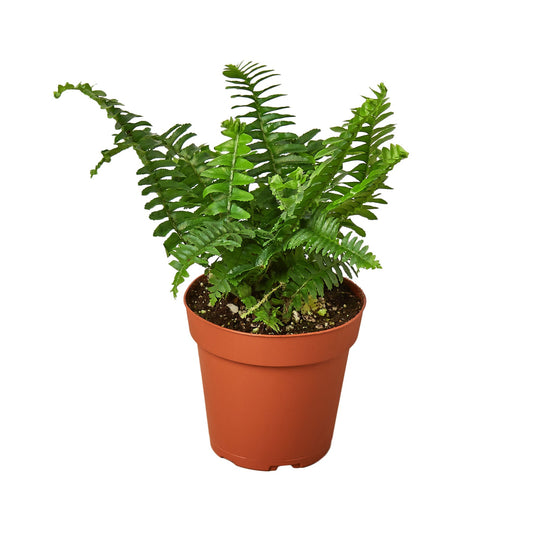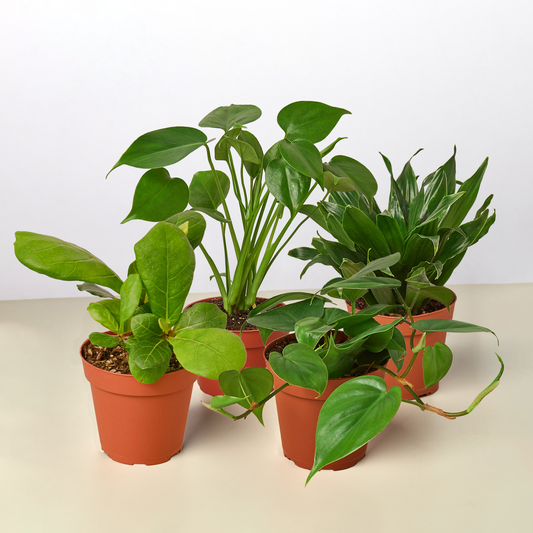Do Money Trees Bloom? A Guide to Money Tree Flowers
Cafe Planta Team
Money trees, or Pachira aquatica, are popular houseplants known for their braided trunks and lush, green leaves. They're often associated with good luck and prosperity, making them a beloved addition to many homes and offices. But have you ever wondered if these lucky plants bloom and, if so, what their flowers look like?
This article will take you on a journey through the fascinating world of money tree flowers. We'll explore whether money trees can indeed bloom indoors, what conditions might encourage flowering, and how to care for your money tree if you're lucky enough to witness its rare blooms. So, let's get started and unravel the mysteries of money tree flowers together!
Do Money Trees Bloom Indoors?
One of the most common questions among money tree owners is whether these plants can bloom indoors. The short answer is, yes, money trees can bloom, but it's quite a rare event when they're grown as houseplants. In their natural habitat, which includes the swamps of Central and South America, money trees can produce flowers more readily.
When grown indoors, however, the conditions are quite different from what they experience in the wild. The environment inside our homes doesn't typically mimic the warm, humid, and bright conditions that a money tree would naturally thrive in. Despite this, with the right care, patience, and a bit of luck, your money tree might surprise you with blooms. But don't be discouraged if it doesn't happen—many plant lovers appreciate these trees for their striking foliage alone.
While the prospect of indoor blooms is rare, there are certain conditions you can try to emulate to encourage flowering. These conditions include providing ample sunlight, maintaining a consistent watering schedule, and ensuring the right humidity levels. Even if your money tree doesn't bloom, these care practices will ensure it remains healthy and vibrant.
What Do Money Tree Flowers Look Like?
If you're fortunate enough to witness your money tree bloom, you'll notice that the flowers are quite striking. Money tree flowers are large and fragrant, with a unique appearance that sets them apart from typical houseplant blooms. They resemble pom-poms or fireworks, with long, showy stamens that radiate outwards.
The flowers can vary in color but are often cream or pale yellow with a hint of blush. They're quite a sight to behold, and their rarity makes them even more special. These blooms usually open at night and might only last for a short period, so you'll want to keep a close eye on your plant if you suspect it's preparing to flower.
It's important to note that even if your money tree doesn't bloom, it's still a healthy plant. Many factors contribute to flowering, and not all of them are within our control. Enjoying the foliage and the positive energy these plants bring to our homes is a reward in itself.
Encouraging Your Money Tree to Bloom
While there's no guaranteed method to make a money tree bloom, certain care practices can increase the chances. Start by ensuring your plant receives plenty of bright, indirect sunlight. Money trees thrive in well-lit environments, but too much direct sunlight can scorch their leaves.
Consistent watering is another crucial factor. Money trees prefer a moist environment, but overwatering can lead to root rot. Allow the top inch of soil to dry out between waterings to keep the roots healthy. You might find it helpful to use a moisture meter to take the guesswork out of watering.
Humidity is also essential for a blooming money tree. These plants love humidity, so consider placing a humidifier nearby or misting the leaves regularly. You can also group your money tree with other plants to create a more humid microclimate, which can be beneficial in a dry indoor environment.
Finally, consider feeding your money tree with a balanced, water-soluble fertilizer during the growing season. This can provide the nutrients necessary for healthy growth and potential flowering. Just be sure not to over-fertilize, as this can harm the plant.
Common Challenges in Money Tree Care
Despite their reputation for being relatively low-maintenance, money trees can face a few challenges that might prevent them from blooming. One common issue is pests such as spider mites, mealybugs, and aphids. These pests can damage the leaves and stress the plant, making it less likely to flower.
To combat pests, regularly inspect your money tree for any signs of infestation. You can use insecticidal soap or neem oil to treat affected plants. It's also helpful to keep the leaves clean and free from dust, as this can prevent pests from settling in.
Another challenge is improper watering. As mentioned earlier, overwatering can lead to root rot, while underwatering can cause the leaves to wilt and drop. Finding the right balance is crucial, so be mindful of your plant's watering needs.
Temperature fluctuations can also stress a money tree. These plants prefer stable temperatures between 65°F and 75°F. Avoid placing your money tree near drafts, heaters, or air conditioners, as sudden changes in temperature can be detrimental to its health.
Repotting Your Money Tree
Repotting is an essential part of money tree care, especially if you want to encourage it to bloom. Over time, money trees can become root-bound, which means the roots have filled the pot and have little room to grow. This can hinder the plant's ability to absorb nutrients and water, making it less likely to flower.
To determine if your money tree needs repotting, check for roots growing out of the drainage holes or circling the surface of the soil. If you notice these signs, it's time to move your plant to a slightly larger pot.
When repotting, use a well-draining potting mix to prevent water from sitting around the roots. You can make your own mix by combining standard potting soil with perlite or sand for added drainage. Be gentle when handling the roots, and avoid disturbing them more than necessary.
After repotting, give your money tree some time to adjust to its new environment. It's normal for the plant to experience some stress initially, but with proper care, it should bounce back and continue to thrive.
Pruning for Health and Growth
Pruning is another important aspect of money tree care, and it can indirectly encourage flowering by promoting overall plant health. Regular pruning helps control the size of your money tree, removes damaged or dead leaves, and encourages new growth.
When pruning, use clean, sharp scissors or pruning shears to make clean cuts. Remove any yellowing or damaged leaves, as these can drain the plant's resources and affect its appearance. You can also trim back any overly long stems to maintain the desired shape and size of your tree.
Pruning encourages your money tree to focus its energy on healthy growth, which can improve its overall vitality. It's a good practice to prune your money tree during the growing season, which typically spans from spring to early fall.
Remember, pruning is not just about aesthetics. A well-maintained money tree is more likely to thrive and, perhaps, reward you with a rare bloom.
Money Tree Blooms and Superstitions
The money tree is steeped in folklore and superstition, with many cultures believing that it brings good luck and prosperity. Some even say that a blooming money tree is a sign of upcoming wealth and success.
Whether or not you believe in these superstitions, there's no denying that the money tree holds a special place in the hearts of many plant lovers. Its unique appearance and association with good fortune make it a popular choice for homes and offices alike.
If your money tree does bloom, consider it a delightful bonus and a testament to your care and dedication. While the blooms themselves won't necessarily bring wealth, the joy and satisfaction of seeing your plant thrive can certainly feel rewarding.
At the end of the day, the most important thing is to enjoy your money tree for its beauty and positive energy, whether it blooms or not.
Choosing the Right Spot for Your Money Tree
Finding the perfect spot in your home for your money tree can make a significant difference in its growth and overall health. These plants thrive in bright, indirect light, so placing them near a north or east-facing window is ideal. This way, they get plenty of light without being exposed to harsh, direct sunlight.
If you notice your money tree's leaves turning yellow or brown, it might be getting too much direct sun. On the flip side, if the leaves are turning dark green and growth is slow, your plant might need more light. Adjusting its position slightly can often solve these issues.
Money trees also appreciate a stable environment. Avoid placing them in areas with fluctuating temperatures, such as near doors, windows, or vents. A consistent temperature helps maintain the plant's health and increases the chances of flowering.
Finally, consider the size of your space. Money trees can grow quite large, especially if they're thriving. Ensure you have enough room for your plant to expand, or plan to prune it regularly to manage its size.
Final Thoughts
Money trees might not be known for their blooms, but with the right conditions, they can surprise you with their unique and beautiful flowers. By providing proper care and attention, you can help your money tree thrive and maybe even witness this rare event.
Here at Cafe Planta, we're passionate about helping you care for your plants. Whether you're looking for a new addition to your collection or need advice on plant care, we're here to support you. Feel free to reach out through our Instagram or email. Let's nurture our love for plants and create beautiful, green spaces together!




















